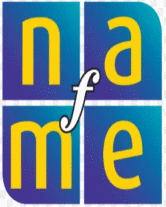Objectives
- Students will learn the relationship of today's pop vocal music and other American vocal genres.
- Students will learn to describe distinguishing characteristics of representative music genres and styles from a variety of cultures.
Materials
- CD Player and/or audiocassette tape player
- CD's and/or audiocassettes including:
- *NSYNC; New Kids on the Block; EnVogue; TLC; Boyz II Men; Take Six; C Note; Bee Gees; Manhattan Transfer; Mamas and the Papas; Beach Boys; Eagles; Crosby, Stills, Nash & Young; Beatles; Temptations; Supremes; Four Tops; Platters; Drifters; The Kingston Trio; The Hi-Los; The Andrews Sisters; and choral groups led by Fred Waring, Robert Shaw, or Norman Luboff
- Copy of the Popular Music Research form
Procedures
- Note: Students should have been taught at least one lesson in MENC's *NSYNC series and befamiliar with *NSYNC songs.
- Survey Students
- Conduct a survey of your students.
- Hand out blank paper and ask students to write the names of 5 pop vocal groups, similar to, but predating *NSYNC. (Answers will vary. Many may not be able to name five--but you may expectBack Street Boys [1998-99], Hanson [1997], New Kids on the Block [1989--mid- 90s and there is a current revival], Boyz II Men [1988--now], En Vogue [1990--now], TLC [1991--now], The Spice Girls [1994--now].)
- Write answers on chalkboard. Arrange the answers in a time line with *NSYNCat the top, descending chronologically with other groups.
- Listen to examples.
- Playing short examples of CD's and tapes of groups you've brought in. Lead aclassroom discussion about pop vocal groups from each decade from the nineties going back to the forties. (You may consider asking students to bring in examples, but you may want to reserve the right to approve the CD's according to your community and school standards.)
- Ask questions about use of choral blend, articulations, attacks and releases,harmony.
- Discuss musical roots.
- Ask questions about origins of groups (Great Britain, California, New YorkCity, Detroit, etc...) and how their background may add to their distinctive sound.
For example, The Beach Boys were synonymous with the 1960's California sound just asthe Beatles held the standard for the sounds of the 1960's British invasion well into the 1970's.
Additional vocal groups from California in the late 1960's through the 1970's you might want to mention include the Mamas and the Papas and the Eagles. The 1960's brought the Temptations, the Supremes, and the Four Tops, along with many other African American vocal groups that developed a sound unique to Detriot-- Motown. For the rhythm and blues tradition, you might mention The Platters and The Drifters with their first hits playing in the 1950s. For doo-wop tradidtion, you might mention the Jordanaires -- Elvis's back-up group, or groups such as Frankie Lyman and the Teenagers with songs like Why Do Fools Fall in Love? Other examples of doo-wop are the Del-Vikings, the Orioles, and the Belmonts.
Popular music blossomed in large part because of its easy accessibility with theinexpensive portable radios in the 1960's--most teens had them and access to their choice of radio stations wherever they were. More likely than not, the radio stations they listened to played rock music. And it was rock music that articulated the social and political upheavals of the 1950's and 1960's.
Depending on your time and students' interest, introduce jazz vocal ensembles like Take Six and Manhattan Transfer (begun in 1972)--both known for complex vocal harmonies andsome scat singing. You might trace tight and complex harmonies to the Four Freshmen, theHi-Los, and, of course, the Andrews Sisters.
These pop and jazz styles would not have developed without the roots of modern choral ensemble. Fred Waring often receives credit for introducing choral popular music alongside the classical. Other masters of bringing pop music to life through choral traditions are Robert Shaw and Norman Luboff.
- Ask questions about origins of groups (Great Britain, California, New YorkCity, Detroit, etc...) and how their background may add to their distinctive sound.
- Research for extra credit.
- Have students research the vocal musical tastes or experiences of their oldersiblings, parents, neighbors, or grandparents. Copy the Popular Music Research form for students to use and submit.
Return to Teaching with *NSYNC.

| Provided in partnership with NAfME |





